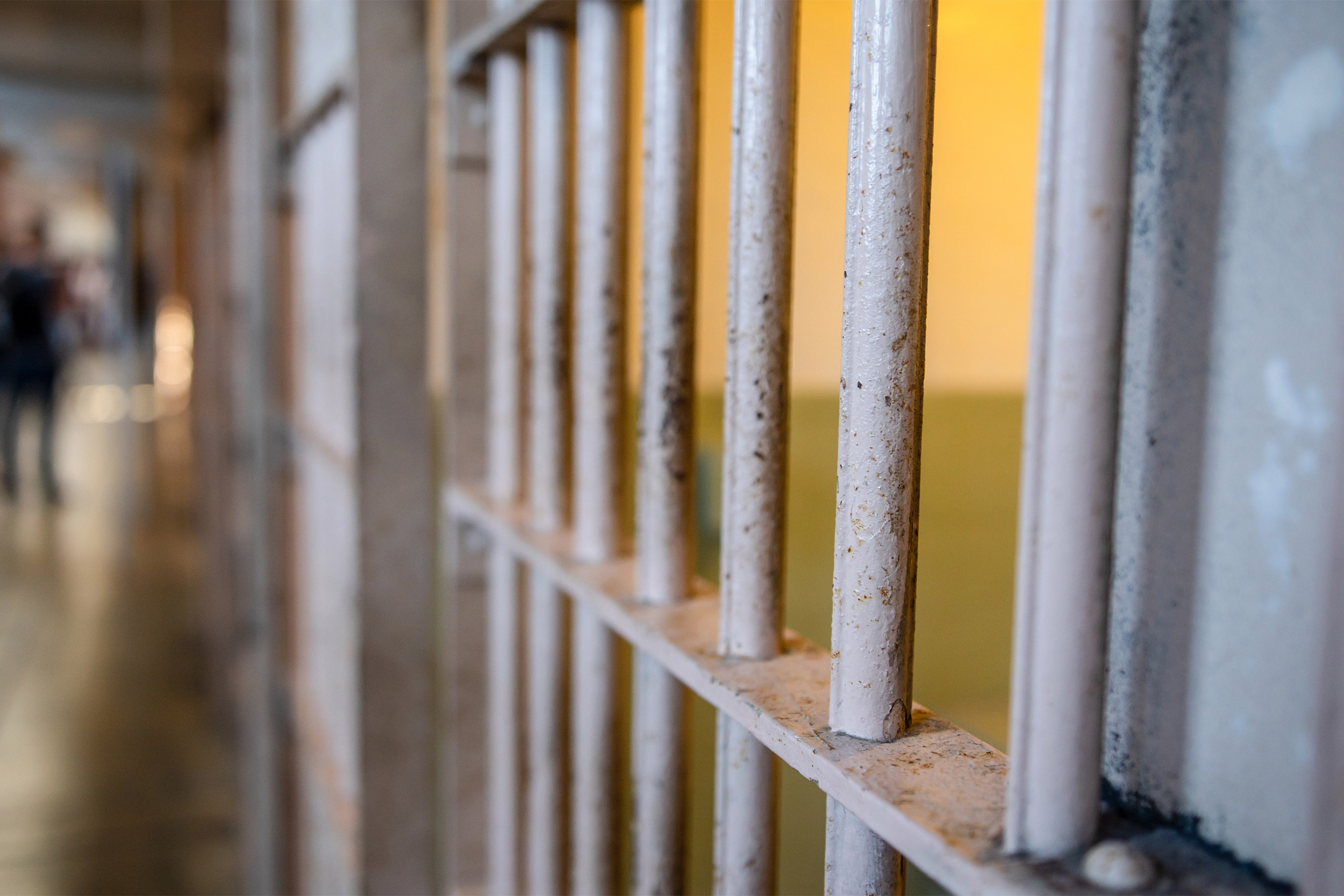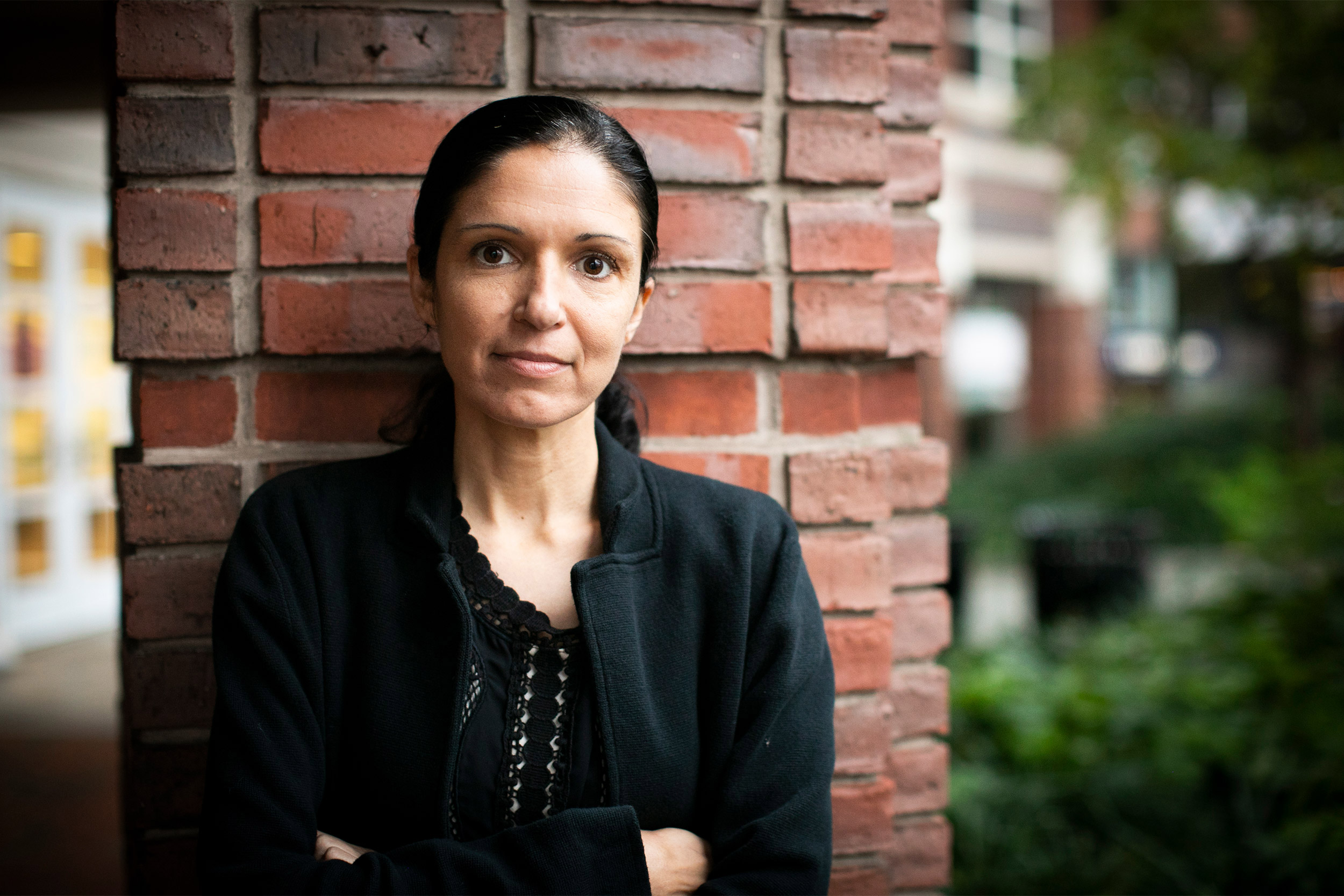
Supreme Court may halt health care guarantees for inmates
Experts on law, policy say originalist view used to overturn Roe could upend ’76 ruling based on cruel, unusual punishment clause
A new paper published in the March 2 issue of The New England Journal of Medicine argues a minimal standard for inmate health care established in a 1976 Supreme Court ruling could soon be struck down if re-examined through the same legal lens that resulted in overturning Roe v. Wade in June. The earlier judgment found that deliberately withholding treatment from prisoners with serious medical needs amounted to “cruel and unusual punishment” under the Constitution’s Eighth Amendment. The lead authors, Harvard Kennedy School public policy Professor Marcella Alsan, a 2021 MacArthur Foundation fellow and physician-economist who studies health inequities, and Crystal S. Yang, Bennett Boskey Professor of Law at Harvard Law School, spoke to the Gazette about this issue. Interviews have been edited for clarity and length.
Q&A
Marcella Alsan and Crystal S. Yang
GAZETTE: What types of physical and mental health needs does the U.S. prison population have and how did the pandemic affect this situation?
ALSAN: The incarcerated population is more likely to have chronic disease, such as diabetes, hypertension, and cancer, and also to suffer from higher rates of infectious disease. Some estimates suggest that more than half have a mental health problem, a substance use disorder, or both. So, you have this double burden of disease, which we often talk about in public health with respect to developing countries where you have both communicable and noncommunicable diseases, you have that going on in our nation’s prisons and jails, with hepatitis, HIV, and then substance use, mental health problems, and other chronic conditions alongside it.
COVID highlighted many U.S. health system failures, including the dire conditions experienced by individuals who are incarcerated, who died at rates of COVID-19 that were 2.3 times higher than the general population.
“COVID highlighted many U.S. health system failures, including the dire conditions experienced by individuals who are incarcerated, who died at rates of COVID-19 that were 2.3 times higher than the general population,” said Professor Marcella Alsan.
File photo by Stephanie Mitchell/Harvard Staff Photographer

GAZETTE: Prisoners have few legal tools if they feel they’ve been denied health care. They also have many structural hurdles to overcome. What are they up against?
YANG: The landmark Supreme Court case Estelle v. Gamble established that failure to provide adequate medical care to incarcerated people as a result of deliberate indifference to serious medical needs violates the Eighth Amendment’s prohibition against cruel and unusual punishment. But this standard is a very high bar to meet. Inadvertent failure to provide adequate medical care or a physician’s negligence in diagnosing or treating a medical condition do not meet the standard.
In addition, it is difficult for incarcerated individuals to bring lawsuits. Under the Prison Litigation Reform Act [PLRA], enacted in 1996, incarcerated individuals must meet certain requirements before they can file suit. For example, the PLRA requires incarcerated individuals to exhaust all administrative remedies by going through a correctional facility’s internal grievance policies. But these policies can be complex, onerous, and hard to understand. The PLRA also caps the amount of fees that attorneys can recover for representing incarcerated individuals, reducing the incentives for private attorneys to take these cases, which means that individuals must seek pro bono legal representation or represent themselves. The PLRA also increased filing fees for individuals, imposing a substantial monetary burden to filing suit. These hurdles, among others, mean that many meritorious claims may not be brought. And even if incarcerated individuals are successful in overcoming these hurdles, the PLRA places limits on the scope and duration of prospective relief, limiting the ability of legal remedies to generate systemic change.
GAZETTE: Why aren’t the incarcerated getting the medical attention and care they need? Is the PLRA the primary cause or are other factors equally to blame?
ALSAN: There is pressure on local and state administrators of correctional facilities to contain costs. The people who are being incarcerated are often sick and have not received routine medical care. If there is no countervailing pressure for quality and standards exercised by an independent authority, the expected outcome is for facilities to focus on cost containment above all else, with sometimes tragic consequences.
There is clearly a political economy component to this, as well. Fissures between “us” and “them” make it difficult to robustly invest in safety net programs even when it is in our long-term national interest. For instance, punitive approaches to crime have been adopted as opposed to rehabilitative approaches. From such a vantage point, failure to provide quality health care [is] thought of as part of the sentence and erroneously believed to function as a deterrent.
The PLRA is a symptom of a broader issue. In the absence of accreditation and standards, you have litigation filling the void, which is inadequate to the task. It’s a fear-based, retroactive system which has officials asking, “What do we do to not get sued?” as opposed to asking, “How can we best take care of this population?” That’s a totally different frame of reference.
GAZETTE: Some COVID-related lawsuits now working their way through the courts could open the door for the Supreme Court to decide that withholding treatment or failing to protect prisoners from pandemics does not embody cruel and unusual punishment as understood in the Constitution. Why is that a possibility and what are the potential effects if that happened?
YANG: The court established in Estelle that failure to provide adequate medical care to incarcerated people as a result of deliberate indifference violates the Eighth Amendment’s prohibition against cruel and unusual punishment by noting that the Eighth Amendment embodies “broad and idealistic concepts of dignity, civilized standards, humanity, and decency.” And thus, the court examined whether conditions in correctional facilities comported with evolving standards of decency.
The current court recently eliminated the longstanding constitutional right to abortion in Dobbs v. Jackson Women’s Health Organization by interpreting the 14th Amendment through a particular originalist lens. A similar approach could jeopardize the constitutional right established in Estelle. Indeed, some of the justices in the Dobbs majority have explicitly argued that the Court has abandoned the Eighth Amendment’s original meaning, with some even having stated in prior decisions that they might vote to overrule Estelle. We fear that COVID-related lawsuits alleging constitutional violations under the Estelle standard could present a case whereby the current Court may claw back the constitutional right to health care for incarcerated individuals. The impact of such a decision would be devastating for justice-involved individuals and further exacerbate health inequality in the United States.

GAZETTE: Terms like “deliberate indifference” and “serious medical needs” are often a source of confusion and open to different interpretations by judges, which can hamstring prison administrators setting policy for the delivery of health care in their facilities. What’s been the impact of this in practice?
ALSAN: That discretion in terms of what is meant, and the lack of specific standards with specific auditing, and an incentive to meet those standards and penalties for failing to meet those standards, leads to massive heterogeneity in how people are treated. Depending on what side of a state or county line you’re arrested, that determines whether or not you get access to substance use treatment or, if you’re a Type 1 diabetic, how quickly you get your insulin — all sorts of things.
GAZETTE: Unlike most countries, the U.S. does not have a uniform standard of care for prisoners or a means to enforce one. What do other countries do and why aren’t we following those protocols?
ALSAN: The Nelson Mandela Rules [adopted by the United Nations in 2015 and named for the former president of South Africa, who spent 26 years in prison in his fight against apartheid] establish minimal standards for the treatment of those deprived of their liberty and require that individuals be afforded humane treatment, including health care, that is up to community standards. The U.S. lacks an independent national regulatory body that can enforce standards and provide robust oversight at every level of incarceration. Countries leading on correctional health are those that view prisoner health as part of public health more broadly. This includes some countries in Europe that have transferred prison health care responsibility from the ministries of justice to their ministries of health, such as Finland, the United Kingdom, and especially Norway. Tracking individuals across the life cycle, including during stays in jail or prison, is facilitated by robust and harmonized electronic health records and public insurance.
GAZETTE: What changes to the PLRA or new legal protections would rectify the systemic health care disparity prisoners experience?
YANG: My co-authors and I believe that several legal changes are necessary to improve health care for incarcerated individuals. Substantial amendments or repeal of the PLRA are necessary to ensure robust access to the court system for individuals who have suffered injuries. But legislation is also needed. Ideally, this legislation would establish clear and robust standards of care, provide incentives for compliance and penalties for noncompliance, and establish an independent, well-resourced federal oversight body that can conduct vigorous, unannounced audits of facilities.
Incentives for compliance with health standards could also be greatly enhanced by allowing federal funds for medical services to flow to incarcerated persons and using standards as a prerequisite for their continued receipt. And we may already be seeing the precursors to this type of approach. Just recently, in January 2023, the U.S. Department of Health and Human Services (HHS), through the Centers for Medicare & Medicaid Services (CMS), approved a first-of-its kind initiative to allow Medicaid to fund treatment for substance use disorders for people incarcerated in California state prisons, jails, and juvenile detention centers up to 90 days prior to their release. This announcement was followed by a Feb. 21, 2023, call from the Biden administration for other states to submit similar proposals. We hope that this is the first of many needed reforms.





